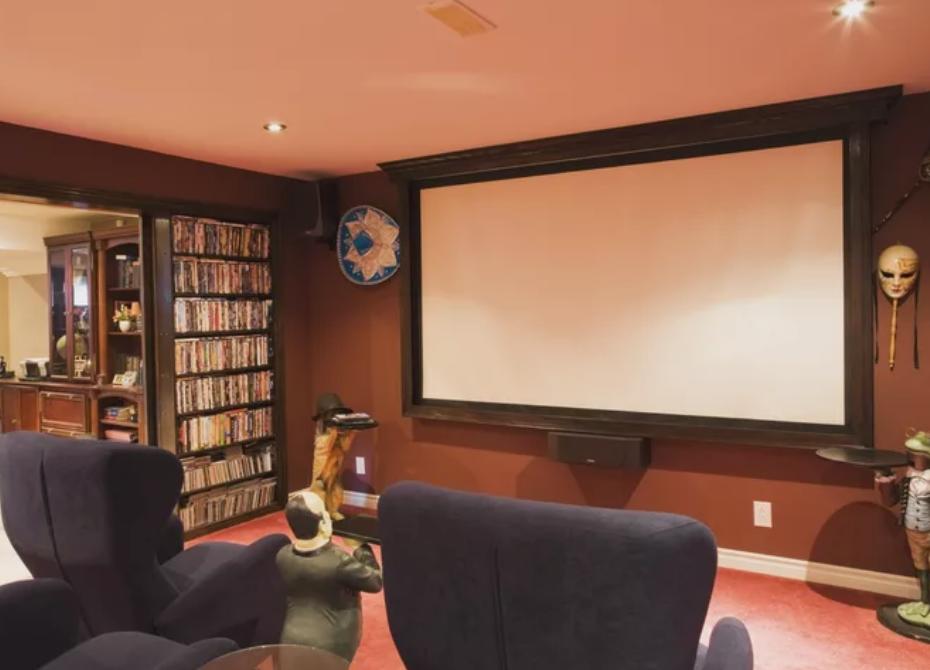The purpose of a home theater is to provide an immersive viewing and listening experience. Your home theater system can be something as simple as 32-inch LED/LCD TV and a soundbar or a home-theater-in-a-box system.
However, if you want more, there are a lot of options that can be tailored to your budget and preferences. Here's everything you need to consider when planning a home theater system setup.

Home Theater Room Setup
The size of the room will determine the size and type of video display device (TV or projector) that would be best. Whether your room is large or small, additional questions to consider include:
How much ambient light is present? For TVs, ambient light can result in screen glare or screen surface reflection. For video projectors, ambient light can result in a washed-out image.
Is the room carpeted or not carpeted? This will affect how sound, especially bass, is distributed throughout the listening area. Hard floors will be more reflective, which can result in unwanted echoes and uneven bass. Carpeted floors will help in the absorption of unwanted audio artifacts.
What type of wall construction do you have? Drywall is much better than wood paneling as it is less reflective, but it can still generate unwanted vibration. To tame vibrations, you may need to use acoustic treatments.
Will you be placing your home theater system components in a cabinet or closet? Depending on how you want the room to look will determine where and how you place your components.
Will you be placing speakers within the room, in the wall, or on the ceiling? Whether ceiling or in-wall speakers are more practical depends on room acoustics and what surround sound formats will be most commonly used.
Where will you be sitting in relation to the screen? This will determine the optimal screen size for the best visual experience.
TV or Video Projector
The most important element of the home theater experience is the screen. Here are your choices:
An LED/LCD or OLED TV. You have a choice of TVs that can display 720p, 1080p, or 4K Ultra HD resolution images. However, 720p and 1080p TVs are now rarely available in screen sizes above 40-inches. 4K Ultra HD is the most commonly available option above that size.
A video projector/screen combination. Video projectors can deliver a truly big-screen viewing experience. Just as with TVs, you have the choice of 720p, 1080p, and 4K options. There are also short-throw projectors that are specifically optimized for small rooms. Setting up a projector comes with special lighting considerations, so you should be able to make the room as dark as possible.

